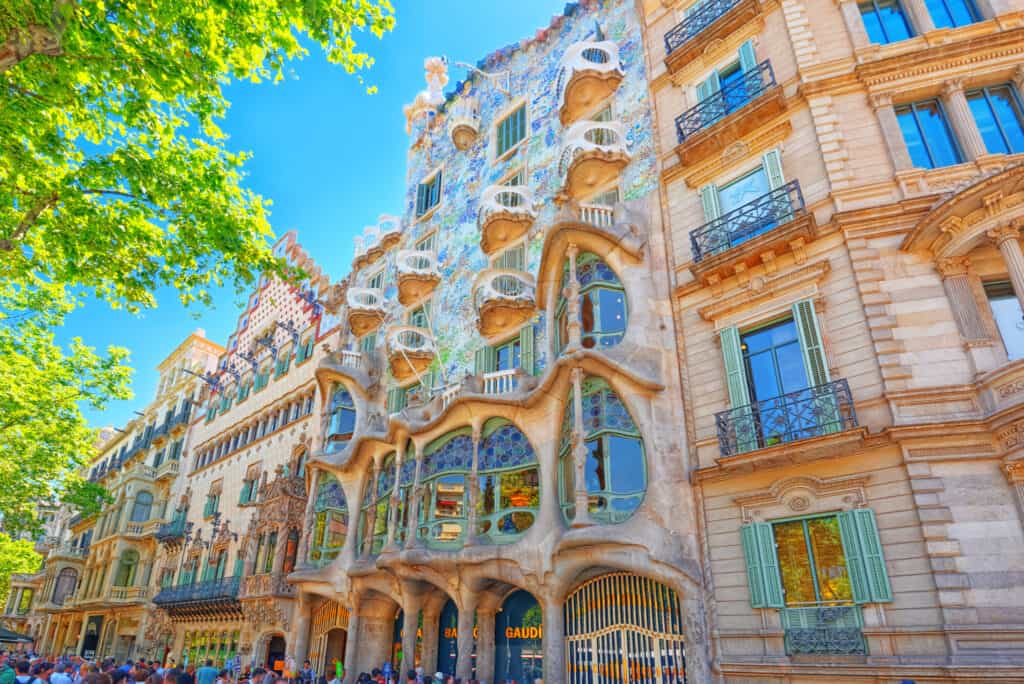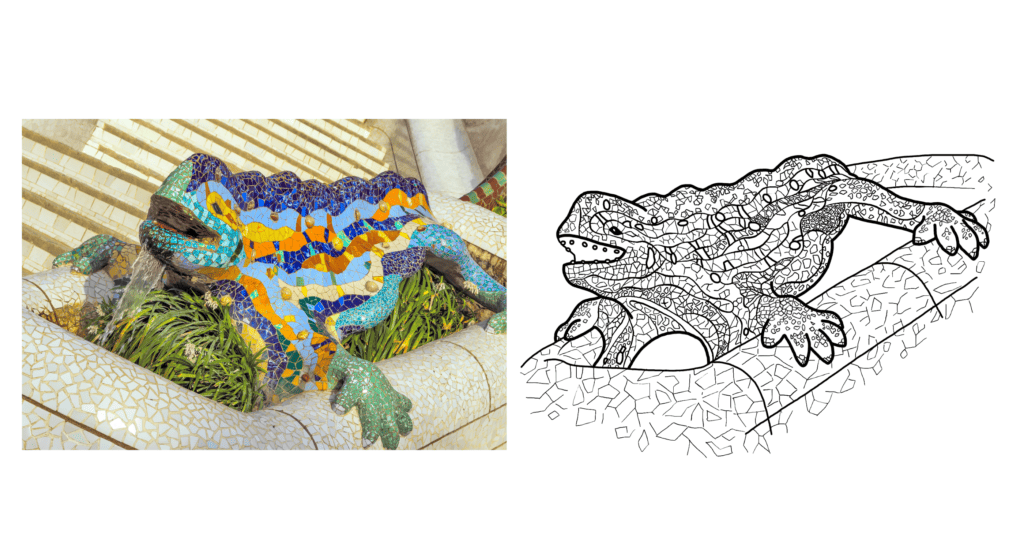In this post: Learn about the famous architect Antoni Gaudí and the buildings he designed in the city of Barcelona, Spain.
A wonderful way to help your little linguists bring their language studies to life is by learning about real life Hispanic and Latino people who have had significant impacts on world culture and history.
One such person is Antoni Gaudí, a Spanish architect who designed many of the world’s most famous buildings in the city of Barcelona, Spain.

If you’re using our Llamitas Spanish Curriculum to help your child learn Spanish at home, you can learn more about Antoni Gaudí in our Level 3 Curriculum, where we have a unit about ‘la ciudad’ (the city) that spotlights Barcelona and Gaudí’s incredible architecture.
There are lots of fun activities and teaching resources to help kids learn about the city of Barcelona and the wonderful architecture of Gaudí.
Who was Antoni Gaudí?
Antoni Gaudí was born in the region of Spain known as Catalonia, on June 25, 1852. In Spain, people are very attached to their region of birth, and throughout his life, Gaudí identified as a Catalan instead of a Spaniard. In fact, much of his art was designed to provide an alternative viewpoint to the traditional Spanish architectural standards established by Madrid.
Gaudí was a sickly child who spent long periods of time resting at his family’s summer home in the town of Riudoms, where he passed his time contemplating nature and its secrets. Much of the inspiration for Gaudí’s unique style of architecture came from observing nature’s patterns and laws.
Gaudí studied architecture at the Provincial School of Architecture in Barcelona from 1870 to 1878. There he learned about a variety of traditional architectural styles, such as the traditional Mudéjar style, which combined Spanish and Moorish influences, as well as Gothic and Baroque architecture.
But, although these styles of architecture were traditional and found throughout many cities in Spain, Gaudí worked within these architectural styles in a way that had never been done before.
Gaudí’s designs were so original and different from anything anyone had ever seen that, when he graduated from the School of Architecture in 1878, the school’s director said,
I do not know if we have awarded this degree to a madman or to a genius; only time will tell.
Over time, it became evident that they had awarded the degree to a true genius!
While many people suspect that Gaudí may have been color blind, he created amazing works of architecture that included bright, bold colors and shapes inspired in nature.

Gaudí’s work contains odd designs with irregular shapes and surfaces, features that most architects would normally smooth out. He also incorporated natural figures as well as colorful tiles in both the exteriors and interiors of his buildings.
Creating his Own Style
During the late 19th and early 20th centuries, a style known as Art Nouveau was gaining wide popularity across Europe and the United States.
Gaudí experimented with this style and created his own version of it, incorporating bold shapes and colors, patterned surfaces, and designs inspired in flora and fauna.
It incorporated influences from Gothic, Baroque, and Oriental art, as well as Art Nouveu and Art Deco. This style became known as Catalan modernism, and the period during which Gaudí designed most of his buildings became known as the Catalan Renaixensa or Catalan Renaissance.

What are Some of Gaudí’s Most Famous Works?
Gaudí is one of the most famous architects in history, and his work is still respected and admired by people from all over the world who flock to Barcelona to visit his most famous masterpiece, the Sagrada Familia.
This breathtaking Catholic church is Spain’s most-visited monument, even though the building is still incomplete, as Gaudí passed away while it was being built.
Some examples of Gaudí’s earlier work in the Mudéjar style include the famous Casa Vicens, the Güell Estate, and the Palacio Güell, all located in the city of Barcelona.
His famous Casa Calvet, also in Barcelona, is an example of Gaudí’s experimentation with Baroque style architecture. The Palacio Episcopal at Astorga and the Casa de los Botines in León are examples of Gaudí’s work in the Gothic style.
By 1902, Gaudí’s work had become increasingly unique and not easily defined by any particular style or by any traditional architectural terms.
Between 1904 and 1906 he designed the Casa Battló, which was a renovation of an already existing building. Wildly eccentric, the Casa Battló is decorated with such unique features as dragon-like shapes and bone-shaped columns.

The façade’s colorful surface is created using a technique known as “trencadís” which incorporates colorful ceramic fragments, which were waste material from the nearby Pelegrí glass factory that Gaudí recycled into his design.
If you’d like to enjoy a creative activity with your child that includes a coloring project that teaches about “trencadís” download our Level 3 Curriculum and let the fun begin!

Gaudí was a devout Catholic and the Sagrada Familia was his most important work, both personally and professionally.
Although he was originally commissioned to construct the famous church in 1883, he didn’t formally dedicate himself fully to the project fully until after 1910, when he moved into the site and abandoned nearly all other projects to concentrate on this masterpiece.
Although he died before finishing this work, it became the most famous monument in all of Spain.
When Gaudí was 74 years old, he was struck by a trolley car while crossing the street, and died from his injuries on June 10, 1926. Although his work was not widely recognized for many decades during his life, Gaudí eventually became one of the most important figures in the history or architecture and design.
Gaudí’s buildings became so important, in fact, that UNESCO declared seven of his works as World Heritage Sites in between 1984 and 2005.
Related posts:



